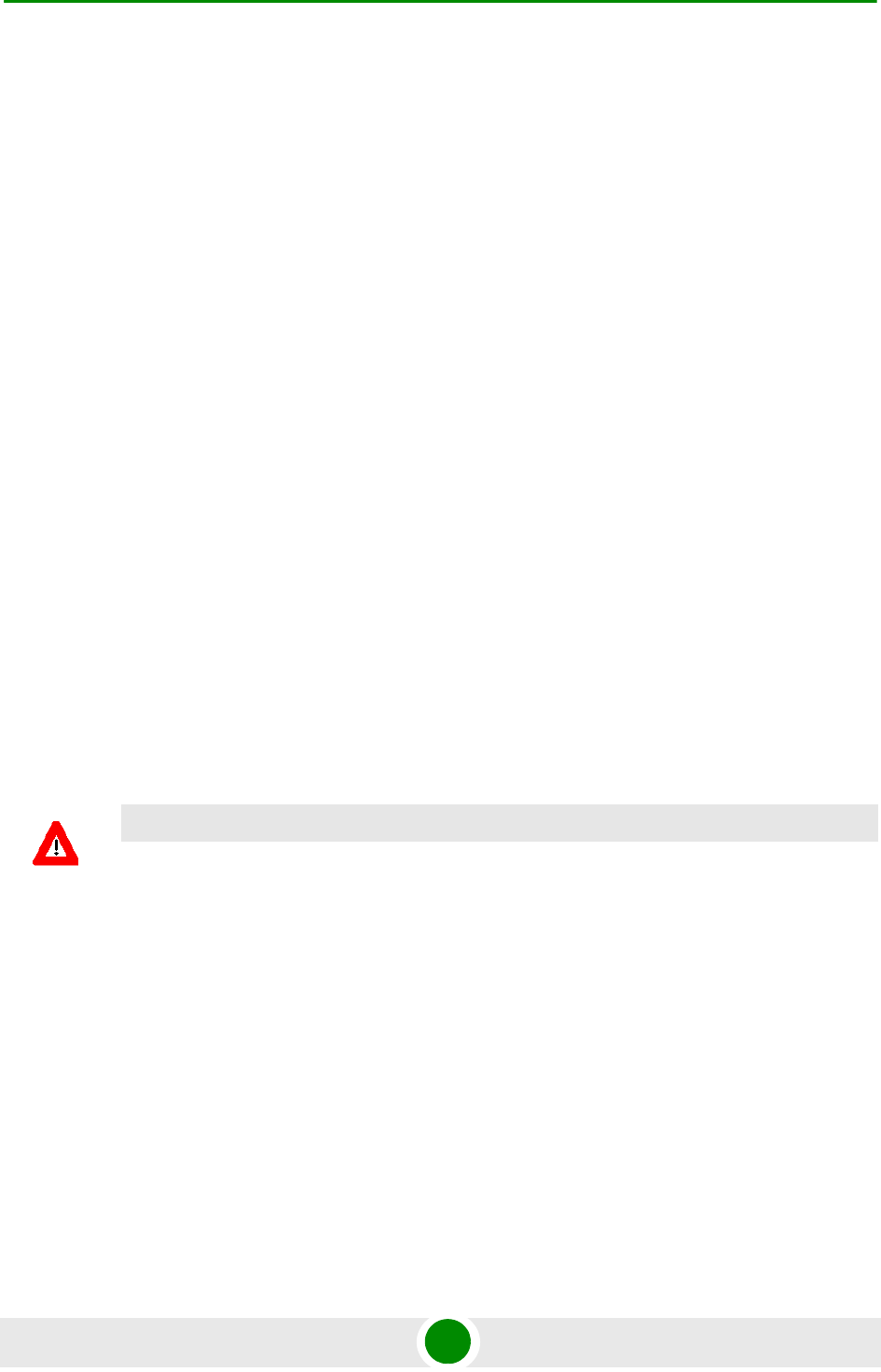User's Manual
Table Of Contents
- BreezeMAX Extreme System Manual
- About This Manual
- Contents
- System Description
- 1.1 About WiMAX
- 1.2 WiMAX Network Architecture
- 1.3 BreezeMAX Extreme
- 1.4 Specifications
- Installation
- 2.1 BTS Installation
- 2.2 GPS Installation
- 2.3 Indoor Power Supply Installation
- 2.4 Cable Connections
- 2.5 External Antennas Connection
- Commissioning
- Operation and Administration
- 4.1 BreezeMAX Extreme System Management
- 4.2 The Monitor Program
- 4.3 IP Addresses Configuration
- 4.4 The Main Menu
- 4.5 BTS Menu
- 4.5.1 Show Summary
- 4.5.2 Show Properties
- 4.5.3 Configuration
- 4.5.4 Unit Control
- 4.5.5 Fault Management
- 4.5.6 Performance Counters
- 4.6 ASN-GW Menu
- 4.7 Sector Menu
- 4.8 BS Menu
- 4.9 Radio Channel Menu
- 4.10 Antenna Menu
- 4.11 GPS Menu
- 4.12 MS Menu
- 4.13 Parameters Summary
- Glossary

Chapter 4 - Operation and Administration BS Menu
BreezeMAX Extreme 141 System Manual
Update: Select this option to update the configured values of the following
parameters:
» Diversity
» UL Thermal Noise Level (dBm)
4.8.2.2.3.1 Diversity
In the current release the supported diversity modes are:
SISO (Single Input Single Output): This is the only mode that can be used by
units using No Diversity operation mode.
MIMO Matrix A: Supported by units using Diversity operation mode.
4.8.2.2.3.2 UL Thermal Noise Level (dBm)
This parameter defines the target noise level to be used for calculating uplink
CINR values that are necessary for various functions such as the power control
mechanism. The BS broadcasts the targeted UL Thermal Noise Level level that is
used by the MSs in open loop power control mode. Increasing the advertised NI
causes the MS to transmit more power to support the same modulation. The NI
value is typically set 6 dB higher than thermal noise (NI) that is measured in this
test.
The range is from -130 to -100 dBm.
The default is -125 dBm.
4.8.2.2.4 Multi Rate
The system employs a multirate algorithm to dynamically adapt the modulation
scheme and Forward Error Correction (FEC) coding to actual link conditions. The
algorithm is managed by the BS taking into account also information received
from the served MSs. Optimal values are calculated separately for the uplink and
downlink for each MS. MAP messages transmitted to the MSs include information
on the uplink rate that should be used by each MS for its next transmission.
The multirate algorithm optimizes the trade-off between capacity and error rate:
In most deployments, most of the links use high order modulation most of the
time, maximizing capacity. “Bad” links use lower order modulation, maximizing
CAUTION
A correct value of this parameter is critical for proper performance of the system. Do not change it
from the default value unless advised to modify it by Alvarion’s experts.










